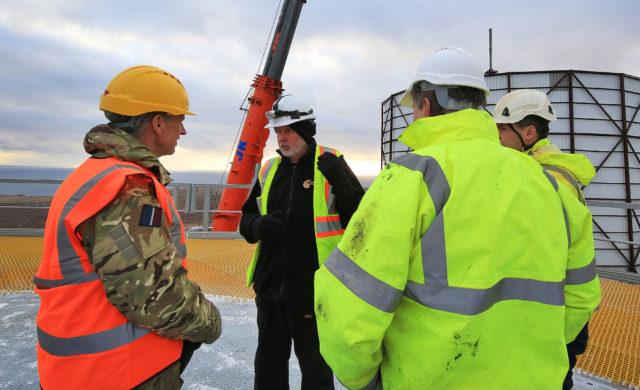
A new RAF radar facility which can track unidentified military or civilian aircraft will be powered up and ready to operate soon, defence chiefs have been told.
Air Chief Marshal Sir Stephen Hillier visited the new £10m Remote Radar Head facility at Saxa Vord, Unst, Shetland, on Friday to inspect its progress.
The radar is expected to improve RAF and NATO understanding of the airspace north of the UK and further out across the Norwegian Sea at a time of heightened Russian military activity.

Defence chiefs say it will see the island return to the role it performed during the 1960s and 70s, when it was used as an early warning radar on NATO’s northern flank.
Defence Secretary Gavin Williamson said: “We will always protect our skies from Russian aggression.
“This radar is a vital part of the UK’s defences as we react to intensifying global threats and reinforce our ability to tackle them.
“Russia’s actions are not limited to Europe’s eastern borders – the threat to British livelihoods is severe and real.”
The Saxa Vord radar head will provide key information on aircraft movements to the north of the UK.
It will also feed the nationwide Quick Reaction Alert (QRA) operation which polices international and UK airspace from RAF Lossiemouth in Moray and RAF Coningsby in Lincolnshire.

The remote radar head will be operated remotely by RAF personnel and contractors will only attend the site for maintenance.
During his two-day visit to Shetland, chief of air staff Sir Stephen also toured the adjacent Saxa Vord RAF and Exhibition Centre and met representatives from Shetland Islands Council, Highlands and Islands Enterprise, Sullom Voe and Shetland Space Centre Ltd
He said: “Right at the tip of Shetland, Saxa Vord is a very remote site, so I’m extremely grateful to the team who have been working hard through the cold of winter, with snow and 120 mph gales, to ensure that the construction has remained on schedule.”


Comments: Our rules
We want our comments to be a lively and valuable part of our community - a place where readers can debate and engage with the most important local issues. The ability to comment on our stories is a privilege, not a right, however, and that privilege may be withdrawn if it is abused or misused.
Please report any comments that break our rules.
Read the rules here